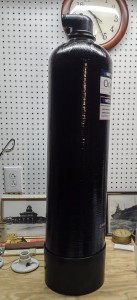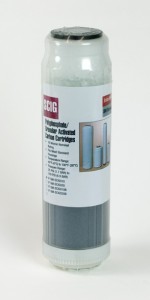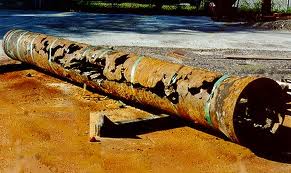Lake Champlain’s creatures feed on diet of plastic ‘microtrash’
by Mike Polhamus

A ruler marked in millimeter increments shows the size of these “nurdles,” tiny and relatively uniform but unidentified pieces of gray rubber found throughout Lake Champlain.
Plastic fibers, apparently from people’s clothing, are accumulating in Lake Champlain fish, plankton and birds, according to a SUNY Plattsburgh professor who is researching “micro” trash ingested by the lake’s aquatic organisms.
The fibers are suspected of introducing harmful substances like heavy metals and hydrocarbons — with which they bond readily — into creatures that ingest them, said Danielle Garneau, who teaches at the university’s Center for Earth and Environmental Science.
Garneau said she and other researchers found accumulations of the fibers in the innards of 14 species of Lake Champlain fish, as well as in zooplankton and cormorants from the lake.
The researchers also found flowing into the lake significant quantities of other tiny plastic particles that pass through Vermont’s wastewater treatment plants, including unidentified tiny gray rubber pieces called nurdles. Garneau said the nurdles’ origin is a mystery but that they’re distributed throughout the lake.

Lake Champlain from Battery Park in Burlington.
The nurdles and many other forms of plastic microtrash found throughout Lake Champlain appear to pass through most aquatic organisms, or to otherwise become undetectable, unlike the fibers that concentrate in their guts, Garneau said.
These fibers are primarily made of polyester and rayon, suggesting that many of them originated in the performance clothing Vermonters favor for outdoor activities in the species’ habitat, Garneau said.
The fibers seem to “biomagnify” up the food chain, she said, meaning predators accumulate garbage fibers from their prey, and those fibers then end up in whatever eats those predators, and so on.
In addition to potentially introducing harmful chemicals into organisms, the fibers are believed to interfere with their digestion in larger quantities, said Rachael Miller, founder of The Rozalia Project, a Vermont water advocacy group.
Miller said people often envision milk jugs and broken portable toilets when they think of large-scale aquatic plastic trash problems such as the garbage patches in the North Atlantic and the Pacific.
But the garbage patches consist primarily of tiny pieces of plastic found in greatest concentrations at the center of vast oceanic gyres that form the marine currents driving the world’s weather patterns, Miller said.
“That’s worse news than if it were a big floating island of trash, because microplastic is a much more difficult pollution problem to deal with,” she said. A milk jug is easy enough to lift out of the ocean, she said, but it becomes much more difficult to remove after sunshine and waves break it down into millions of microscopic fragments.
The tiny fibers that Garneau and her fellow researchers are finding accumulated in Lake Champlain organisms probably came from clothes, she said.
Research suggests the fibers escape into the environment not just from wastewater from washing machines, but also from air pumped out of clothes driers, Miller said.
Wastewater treatment plants aren’t designed to remove the fibers or other particles of plastic, and so the best way to reduce their spread is to prevent them from leaving the house in the first place, Garneau said.
Miller invented a device meant to catch the fibers while they’re floating in washing machines.
Both women said there is evidence people can help by washing their clothes in ways that don’t break down fabrics. This means liquid detergent instead of powdered, soft water instead of hard, cool water instead of hot, and gentle cycle instead of heavy duty.
“Microplastics are not just a phenomenon at the center of ocean gyres,” Miller said. “We have microplastics in urban harbors and in Lake Champlain. … It’s important that people understand this is a problem right at our toes, and not just thousands of miles away.”
Source: VTDigger.org











